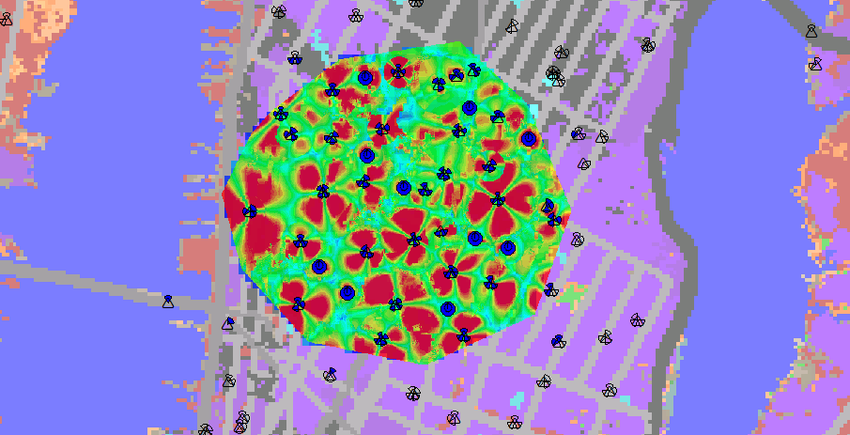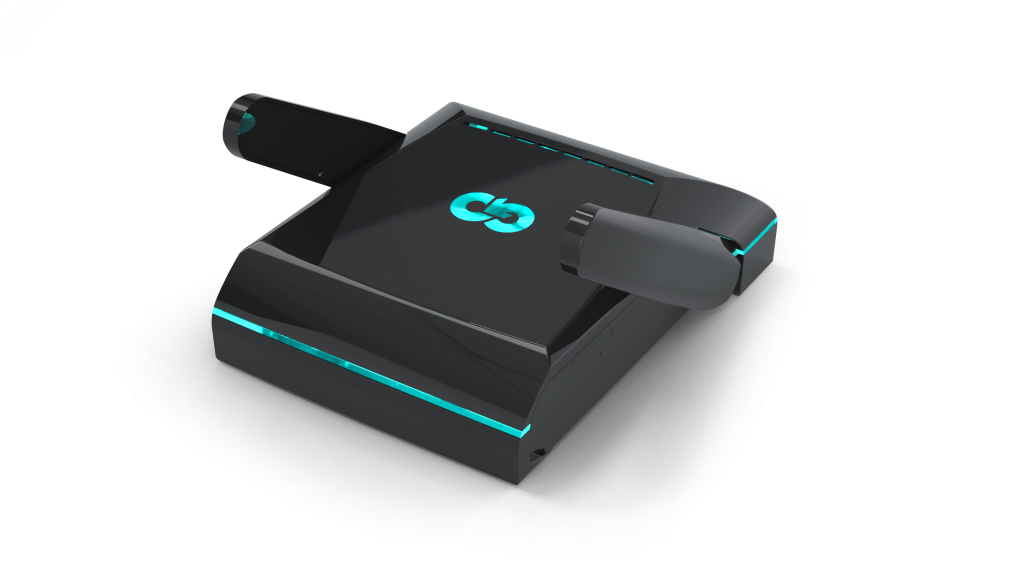Travel Router vs. Cellular Hotspot

Whether you are considering your first travel WiFi device, are looking to upgrade to something more reliable or simply trying to figure out the best approach for your situation, the terminology around it can be confusing. You certainly wouldn’t be alone in seeking clarity. With no “official” body aligning the terms between different manufacturers, vendors or retailers the terms can start to blur together.
If you are not a techie, the jargon between the different devices only add to the confusion. The technical differences matter and they do help with understanding and determining the best solution for your needs but that’s of no use if you don’t understand them. Don’t worry, we’ll break down the practical applications of these differences so you don’t have to understand all of the technology behind it.
In this article we dive into the common types of travel WiFi devices, what the terms generally mean and what to look for when considering one of these devices. Our goal is to help you figure out what kind of device you need to deliver the best travel WiFi experience.
Travel Router
In the last few years travel routers have exploded in popularity. Their ability to make it easier to take multiple devices with you when traveling by creating a private, secure WiFi network make them invaluable. And all in a small, portable package.
What Are Travel Routers?
Travel Routers are devices that are designed to create your own private network that are generally small (about the size of your hand). They almost always have the ability to create a private WiFi network.
The value of having your own private network are two fold. First, lets you take your own devices such as phones, tablets, laptops, streaming sticks, smart speaker and even smart assistants with you when traveling without needing to setup each device separately for the internet or WiFi at a hotel, Airbnb, RV park or other location. You simply connect the travel router to the network at that location and then all of your devices you brought with you are on that connection.
The other benefit is security. Travel routers essentially create your own personal private network out of the public network you access when traveling. Think of it like your own private room at a restaurant. You’ll still in the restaurant, eating the same food, but people generally can’t see what you are doing or hear your conversation. While travel routers along don’t guarantee complete security, they certainly make you a much more difficult target. If you are interested in learning more, check out our article on how travel routers help secure public WiFi.
What Are The Considerations For A Travel Router?
Not all travel routers are created equal. Generally speaking, most devices calling themselves a “travel router” will have the same basic core function: create a private WiFi network out of an existing network. Beyond that, there are a lot of variations.
First, because most routers involve moving internet traffic around, some of the user interfaces can be very technical and difficult to use. Also, while most travel routers connect to WiFi or wired (physically plugged in) network, not all travel routers do a good job securing that connection. Also, as wired networks begin disappearing in favor of WiFi, newer generations of travel routers are opting to exclude the capability for physical connection.
Another consideration is that, for most travel routers, they are only as good as what they connect to. While some travel routers have the capability to optimize (enhance) and boost performance, most travel routers can’t. Most regular travelers know just how poor and unreliable most travel WiFi connections can be.
There are a number of known shortcomings to a lot of travel router products. But don’t let that stop you from considering one. The user interfaces for travel routers are getting easier and more intelligent. Just be sure to pick the right product and make sure to research not just the capabilities, but whether the experience of using it fits with what you are looking for.
A solution often is to buy a cellular hotspot rather than using the available free or public WIFi. Which is a nice segue to…
How Are Travel Routers Different From Hotspots?
Travel routers and cellular hotspots are different in a key way. While travel routers create a private WiFi network out of a public internet connection, cellular hotspots create a private WiFi network out of a cellular connection. Generally speaking, cellular hotspots are not designed to work with public WiFi as well, only the cellular network.
However, it’s important to note these are general statements. It’s also important we note that if you are thinking about your cell phone hotspots, which are known as “Personal Hotspots”. While your phone can connect itself to public WiFi, most cell phones cannot share that connection, even if they can share their cellular connection.
We should also note there are a few individual travel routers that can also support a cellular card for added benefits. There are also some cellular hotspots that can also connect and use other public internet, usually as a secondary choice when cell signal is poor or to provide an option to limit your data consumption. These may even be referred to by a different name.
The nuance may be a little confusing. We expand on cellular hotspots devices and how they differ from personal hotspots next. We also talk about travel routers with cellular features below.
Cellular Hotspot
Cellular hotspots began appears when 3G cell phones came to market, but they’ve truly taken off in the last 5 years or so with the release of 4G LTE. You’d certainly expect them to become even more common as our digital lives demand more connectivity. The availability of 5G is also likely to completely revolutionize travel technology in 2021 and beyond.
What Are Cellular Hotspots?
Cellular Hotspots are devices that create your own private WiFi network out of a cellular connection. They allow you to connect to the internet anywhere your device gets cellular coverage. You can use them in lieu of paying for WiFi at hotels and airports, you can use them where no WIFi is available such as when riding in a car, and they often can provide a better alternative in terms of performance to most free WiFi networks you connect to.
In addition, like a travel router, having your own private WiFi network lets you take your own devices such as phones, tablets, laptops, streaming sticks, and other devices when traveling without needing to setup each device separately. Also, like the travel router in that cellular hotspots create their own private WiFi network you’ll have added security.
What Are The Considerations For A Cellular Hotspot
Data and Plans
There are a few things to consider when deciding if a cellular hotspot is right for you. First, most cellular hotspots only work with cellular connections for internet. This means every time you use it you will be consuming cellular data. While there are a few companies that offer “unlimited” data it’s rarely actually truly “unlimited”. There is generally a limit on how much “high speed” or fast internet you get before slowing you down. WAY down in most cases.

When it comes to plans, there are a few things to consider. Most devices you buy from a major cell phone carrier will only work with that carrier. Other devices you can buy will let you pick which data provider you want. Most cellular hotspots come from a data provider. The idea being that they provide the total experience of the device, the data and the user experience. There are pros and cons to each, like portability or the ability to change carriers. The vast majority you will get the data plan from the place you buy the device.
If you do a buy a device outside of the data provider, be sure to check that the device works (and works well) with the carrier you would like to use. Each of the major carriers may call their cellular service 4G LTE but they all operate on different bands and frequencies. Not every cellular hotspot or card works with every carrier or even all of the frequencies offered by that carrier.
Cellular Coverage
Another consideration is cellular coverage. While cell coverage is great along interstates and in cities or suburbs, there are a few places you may find WiFi available but not cellular. This includes inside major cities where in building coverage can be limited. And in rural areas you may find almost no cell coverage. For RVers and adventure travelers you may find the National Park and campground offer WiFi, but cell service is non-existant.

All cell coverage isn’t equal either. If you get coverage, the performance may be slow. While cell companies have been working to improve speed and performance, there is no guarantee that it will be a certain speed.
Another thing to think about is coverage range. Cellular hotspots tend to have limited range and few have antenna. This means they are great for a small office, hotel room or car. However, if you need to cover a large convention area, Airbnb (house) or other area they often will have a very limited range compared to a router.
Capabilities and Number of Devices
Lastly cellular hotspots generally are not designed to work well with more than a handful of devices. They are getting more powerful every year but if you are using it for an RV, travel as a family with a lot of devices or just simply require more advanced features you generally will find most hotspots are not up for the task.
One of the biggest challenges overall with a cellular hotspot can be that while they generally work more places than just WiFi, they still have limitations. Worse, unless you are using them regularly they often carry a high monthly cost to have just in case. Since few devices have both travel router like and hotspot like capabilities, you generally have to choose between the two.
Personal Hotspot vs Cellular Hotspot Device
This is a question we get asked all of the time. Almost every cell phone today has the ability to create a personal hotspot. Your phone creates a private WiFi network sharing the phones existing cellular data connection. The pro of this is that you don’t need a separate device and if you only need to use it occasionally, you don’t need to have a separate data plan.
There are few things to consider in deciding whether just using your personal hotspot is sufficient. First, not all cellular plans allow you to use hotspot data. And most that do, even from major carriers, give you less hotspot data than they give cell phone data.
Another thing to consider is that your cell phone’s WiFi range is likely very limited. They are useful for a car, small hotel room or office. They are not likely to be powerful enough to cover a whole house or get through walls.
Also, the biggest downside of a personal hotspot is if you need to leave or move, the hotspot goes with you. If you are traveling with others, or need your devices to stay connected when you are not them, you’ll have to chose between taking their internet or leaving your phone.
Hotspot Router/Cellular Router/Cellular Travel Router
In the last few years there have been a number of devices that have come along that create a hybrid between Travel Routers and Cellular Hotspots. These are known by a number of different names – they include Hotspot Router, Cellular Router or Cellular Travel Router. There is one product that even calls itself a Travel router with cellular.
Despite all of the different names they have one thing in common. They combine some of the more powerful WiFi features of a router with the ability to connect to a cellular network.
These devices may have integrated cellular capability, or in some cases they can support a cellular card which must be purchased and activated separately. Much like the cellular hotspots, some devices will allow you to pick any data carrier you want. Many others will provide the service along with the device. In the case of purchasing a card, if they lack an integrated card or allows you to pick your own data plan, be sure to validate it works and works well with your chosen carrier.
Also, while all of these devices generally share cellular capability (or the ability to add them), all of the features are not the same. Some may feature the ability to turn your cellular connection into a wired network, not just wireless like a cellular hotspot would.
Others may feature the ability to work with WiFi and cellular. Some devices will allow you to manually switch over to cellular if WiFi is not connected or not available. More robust products may even be able to switch over automatically. The most robust and intelligent ones will actually be able to run WiFi and cellular at the same time for more bandwidth or to automatically smooth out poor WiFi or weak cellular signals.
RVers, business travelers, those who use co-working spaces, digital nomads and gamers will be especially interested in travel routers with cellular hotspot capabilities. They can help ensure connectivity in a variety of conditions without necessarily having to drain data.
Conclusion
Despite the variations in names, terms and features we think this blog post will help you through the choices and considerations as you plan which travel WiFi device is right for you.
Go Connect Travel WiFi Products Solves It All
If you don’t want to have to parse through all of these decisions, our Go Connect line of travel WiFi products makes it easy. We take the best of of all of these options into a single line of products. Our device allows to you create a private WiFi network when traveling that is secure, improves performance and is absolutely easy to use. No technical expertise is required.

The only decision you’ll need to make is whether you want the optional cellular version. If you do choose cellular, you won’t even need to decide between whether to use public WiFi or cellular, our device will connect to both. It even manages the connection for you so you don’t need to decide when you switch or reliability or whether to use the WiFi to save data.
Our goal is to provide a product line that focuses on getting you and keeping you connected, so you are free to surf, stream or work. And if you decide to stream instead of work, don’t worry, we won’t tell.
